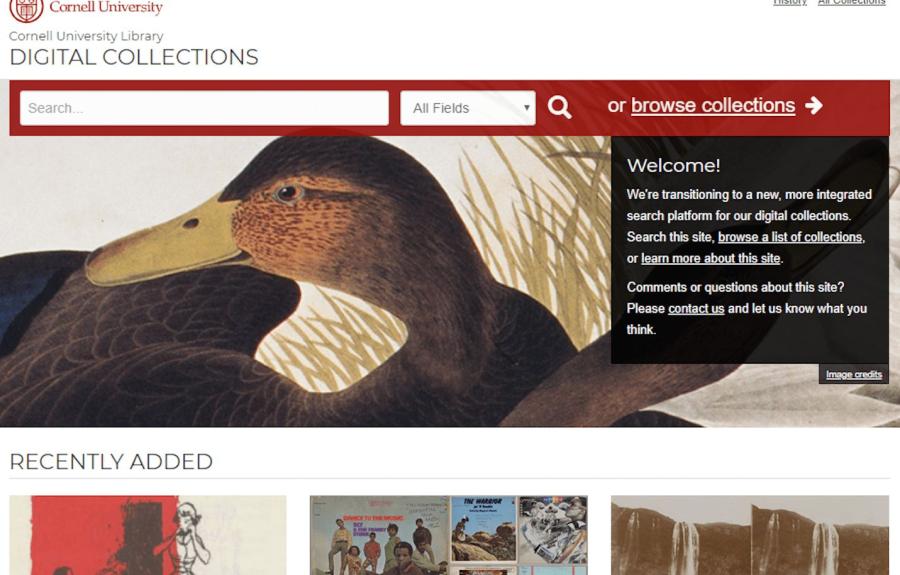
The subject of my talk is Cornell University Library Digital Collections. The actual object of discussion is the database or discovery portal itself, as well as the many born digital objects and digital surrogates that it houses.
Launched in December 2015, the Cornell University Library Digital Collections portal aggregates the library’s rich digital collections content into a single interface, with the goal of enabling easier access and discovery of these resources. This is by no means a unique concept, as many libraries make their collections available online, but this was new to our library, as prior to 2015 there was no simple way to view our institutional image holdings. Sources for this content currently include image files from Artstor, which is a repository of art, architecture and general humanities images that institutions can license), some text-based content migrated from a content-management system, and audio-visual materials housed in Kaltura, a platform for AV. There are plans to add new content from several print repositories, which means that all kinds of media is available in one place, a one-stop shop. The database was built by staff from the library’s Digital Scholarship and Preservation Services, Information Technology, and Library Technical Services departments, and is powered by Blacklight, SOLR, Fedora and IIIF. It is currently maintained by Cornell Library’s Digital Consulting & Production Services (DCAPS).
Having this website is good branding for this institution. Cornell actually has an impressive array of visual materials, and having them all in a repository with a pleasing interface serves to improve user experience.
One of the other merits of creating a website of digital collections is that people can see digital surrogates of objects that they might need to travel from far away to see. The experience will not be the same, the object of study cannot be touched or explored using the senses. This leads to a discussion of how one interacts with physical versus digital collections. Studies have been done that discuss object aesthetics, emotional experience, interpretation, memory and personal narrative related to physical and digital objects. Do people spend more time with physical or digital objects when they have access to both? Does it depend on the kind of study that they are undertaking? What are the barriers between the user and the interface of a digital object? How much context is needed or should be provided in either instance?
I intend to talk about the diversity of the collections in the Cornell University Library Digital Collections, which you can see from a screenshot of the homepage. From Nuclear Fallout Pamphlets to the Afrika Bambaataa Vinyl Collection to Stereoscopic Pictures from Iceland, no two collections are the same from a content perspective, but sometimes there are parallels. For instance, Cornell has collections of casts, coins, gem impressions and squeezes (which are rubbings of historic monuments) are all grouped together into one website, but to browse the collections one can go to the digital collections site. What excites me about this repository is its potential, what it already contains and how it can grow.
Marsha Taichman, Cornell University Library
